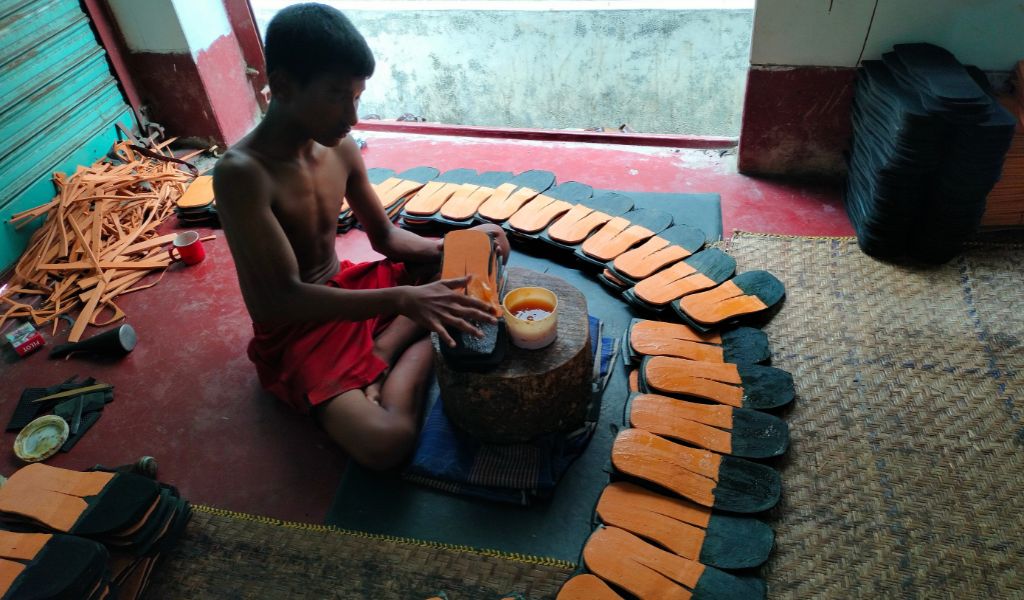A five-year study with child workers in Bangladesh’s growing leather industry has uncovered children working in dangerous and harmful conditions at every stage of leather processing and production, driven by the need to support their families financially.

Children as young as eight, were found to be in hazardous child labour, including carrying heavy loads, manually dyeing leather using harmful chemicals, working in extreme heat and operating cutting tools and heavy machinery without safety measures.
Worst forms of child labour
Researchers conducted the study using participatory action research as part of the Child Labour: Action-Research-Innovation in South and South-Eastern Asia (CLARISSA) project, led by the Institute of Development Studies. They are calling on the new interim government of Bangladesh to protect children from the worst forms of child labour, as part of wider reforms to injustice and human rights in the country.
Support is especially needed for the country’s poorest children, and their families, living in slum neighbourhoods around the small, informal leather production and processing businesses, in and near Dhaka, where the harmful child labour was found.
Leather is Bangladesh’s second largest export item (after ready-made garments), and the growing domestic leather market is worth US$ 2billion (Bangladesh Investment Development Authority).
Child labour in small leather enterprises
The study looked at over 1,700 households in slum neighbourhoods connected to leather processing and production and found that 34.6 percent of the children were working in worst forms of child labour, as defined by the International Labor Organization.
As part of the project, a survey conducted in the Hazaribagh, Hemayetpur and Bhairab areas of Bangladesh found that over a quarter of workers at 158 small leather enterprises were children (27 per cent of 880 workers).
While not directly comparable, the CLARISSA research suggests a far higher prevalence of worst forms of child labour than the last Bangladesh National Child Labour Survey (2022), which estimated that 4.4 percent of children were engaged in child labour, and just 2.7 percent of children worked in hazardous sectors, like the leather industry.
Jiniya Afroze, Country Coordinator for Bangladesh for the CLARISSA research project, said:
“Many informal businesses rely on child labour simply because they lack financial options. By offering flexible business capital, we can help them transition to more responsible practices and reduce their dependence on child workers. At the same time, if employers are forcing children to work longer hours through abuse or coercion, we must hold them accountable. This could mean stricter penalties for violations or giving them the training they need to implement ethical practices.
“Most importantly, we must listen to children’s voices and experiences, ensuring that any interventions we design are truly effective in bringing about positive change in their lives.”
Professor Danny Burns, Research Fellow at the Institute of Development Studies, who led the CLARISSA research project, said:
“The leather sector is one of the most profitable sectors in Bangladesh and is a major contributor to the country’s economy, but this billion-dollar industry relies on the informal economy and its use of cheap labour, including children living and migrating into rapidly evolving informal settlements.
“It’s important to listen to children and their employers to understand how child labour has become critical in Bangladesh’s leather supply chain system and an important contributor to their households financially.”
Millions in child labour globally
A total of 160 million children are in child labour globally – equating to almost one in ten children worldwide and despite efforts of the UN, NGOs and governments to eliminate all forms of child labour by 2025, the target now seems a long way off.
To help eliminate the worst forms of child labour in Bangladesh and globally, the researchers want to see more direct engagement with communities, including working children, parents, health workers, schools and local businesses, financial support for families of child workers and recognition of the role of education and affordable, quality schooling.
The researchers also want countries, including Bangladesh, to prioritise universal health coverage to alleviate child labour, as a health crisis in the family is often the reason children first have to work, to repay loans taken out to pay medical expenses or to cover the loss of income from a parent who is ill or has sadly died.
Read more about CLARISSA’s work with children as agents of change and the life stories of children in the worst forms of child labour in the leather industry in Bangladesh at hardlabour.info.
